IEP TRANSITION GOALS
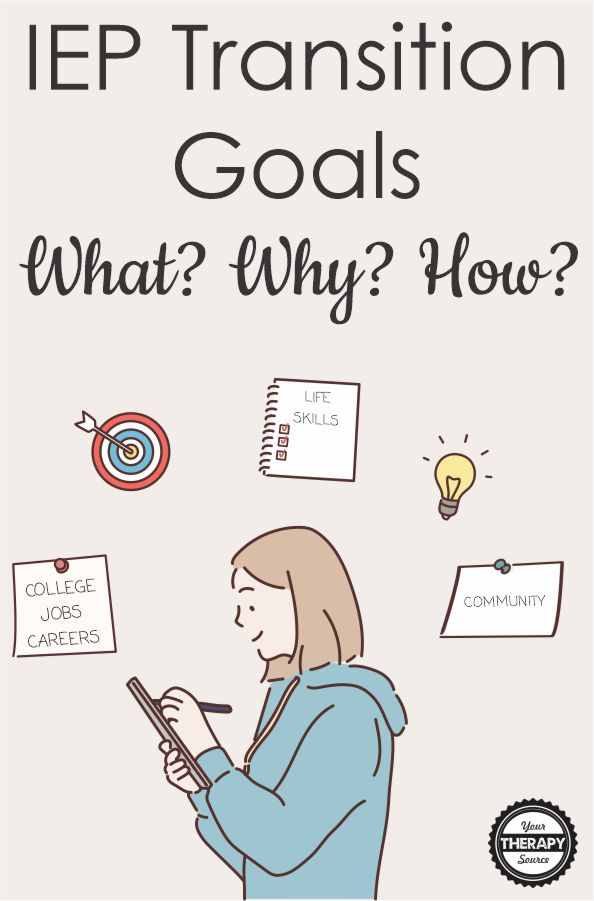
Picture this: Your student has just graduated from high school and is starting their first day of work or college. This is a huge accomplishment and something to be proud of, but it’s also the beginning of a new journey. As a teacher, you’ve been with your student through thick and thin, supporting them every step of the way – and now it’s time for you to say goodbye. But don’t worry, because you’ve helped your student prepare for this moment by setting some IEP transition goals and doing some transition planning. Learn more about how to set these goals and what they should encompass.
WHAT ARE IEP TRANSITION GOALS?
IEP transition goals are a part of the Individualized Education Program (IEP) that helps students with disabilities plan for their future after high school. For the duration of their time in high school, students have had secondary goals on their IEPs. Now they need post-secondary goals. These goals focus on the skills and knowledge that a student will need in order to be successful in their post-secondary life, whether that’s attending college, entering the workforce, or living independently. When students have their final IEP meeting of high school, they go over their transition goals.
WHY ARE IEP TRANSITION GOALS IMPORTANT?
IEP transition goals are important because they help students in the special education program identify their strengths and interests, and set achievable objectives for their future. Without these goals, students may feel lost or unsure of what they want to do after high school. IEP transition goals can also help teachers tailor their instruction to better meet the needs of their students.
WHY DO HIGH SCHOOL STUDENTS HAVE TRANSITION GOALS?
High school students have IEP transition goals because they need to be prepared for what comes next after graduation. Students need to be properly set up to be a post-school adult. Transition services don’t start earlier because students already have annual goals in their IEPs that reflect high school goals. These new transition goals are appropriate measurable postsecondary goals. These goals help students develop the skills and knowledge they need in order to be successful in their post-secondary life.
HOW ARE IEP TRANSITION GOALS DEVELOPED?
IEP transition goals are set by the IEP team at the IEP team meeting which includes the student’s parents or guardians, teachers, counselors, and other school personnel. The team will meet to discuss the student’s needs, preferences, and what they want to achieve after high school. The team can use appropriate transition assessments such as interest inventories or functional vocational evaluations. A guidance counselor can also look at behavior, academic achievement, and student interests. They can look at the student’s past annual IEP goals. Together, they will develop a plan that includes the components of IEP transition goals to create measurable postsecondary goals.
WHAT DO IEP TRANSITION GOALS INCLUDE?
IEP transition goals should be specific, measurable, achievable, relevant, and time-bound (SMART). They should also be based on the student’s strengths, interests, and needs.
Some things to keep in mind when setting IEP transition goals:
- They should be based on what the student wants to do after high school, not what they’re doing now. Although, the two are most likely connected.
- They should be based on the academic and functional performance of the student.
- Goals should be specific. They should identify what the student wants to achieve and how they will achieve it.
- IEP transition goals should be measurable. This means that there should be a way to track whether or not the student is meeting their goal.
- They should be challenging but still within reach for the student.
- Goals should be relevant to the student’s talents, abilities, interests, and needs.
- IEP transition goals should be time-bound, which means they should have a specific timeline for when they need to be accomplished.
- Often they include the development of employment skills based on student ability and past community experience.
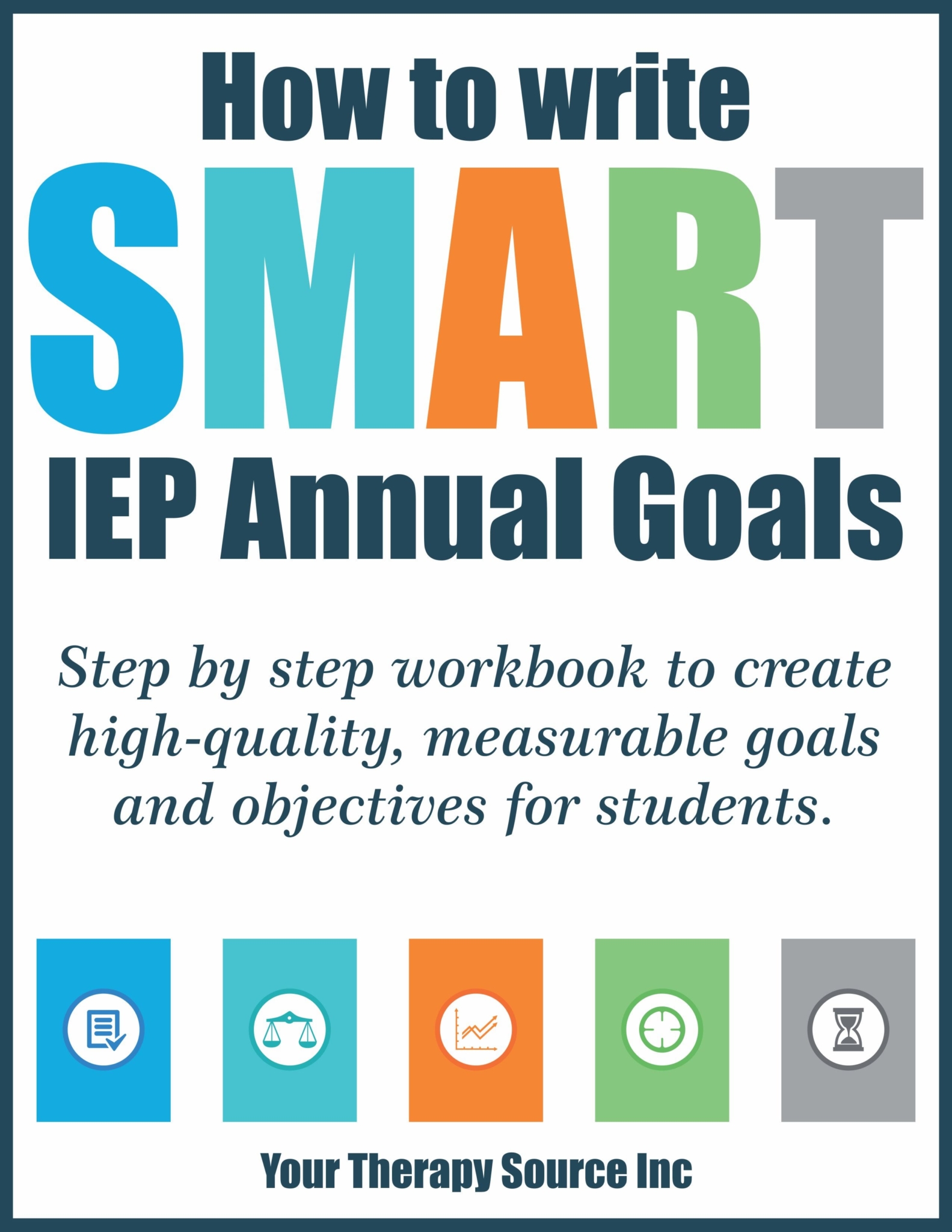
How to Write IEP Goals Workbook
IEP TRANSITION GOALS EXAMPLES
Transition goals will look different depending on the individual student and their capabilities. A student who has been in an inclusion setting for their entire academic career will have different goals than a student who has been in life skills classes for most of high school.
Life Skills Examples
Students who have been in the life skills program should have IEP transition goals that reflect their experiences in the acquisition of the life skills that they attained. The focus should be less on academics and more on employment skills. They may also focus on daily living skills and independent living skills. Students have the option of going into vocational education, community college, or a part-time job.
After high school, Jenny will:
- Participate in education courses of study at community college focusing on life skills instruction and basic employability skills for 2 semesters.
- Work 25 hours or more per week as an entry-level grocery store cashier with the support of a job coach
- Volunteer at a hospital for 5 hours per week or more for at least 2 months after graduation.
- Take on a share of the living expenses. Jenny and her parents can come up with a budget and Jenny can save money from the grocery store to assist her parents with a payment once a month.
After high school, Michael will:
- Volunteer at the animal shelter for 5 hours per week or more for at least 2 months after graduation.
- Work 15 hours or more per week as a library assistant with the support of a job coach.
- Live independently in an apartment with 3 other roommates with supports in place.
- Take on a share of the living expenses by paying rent and utilities.
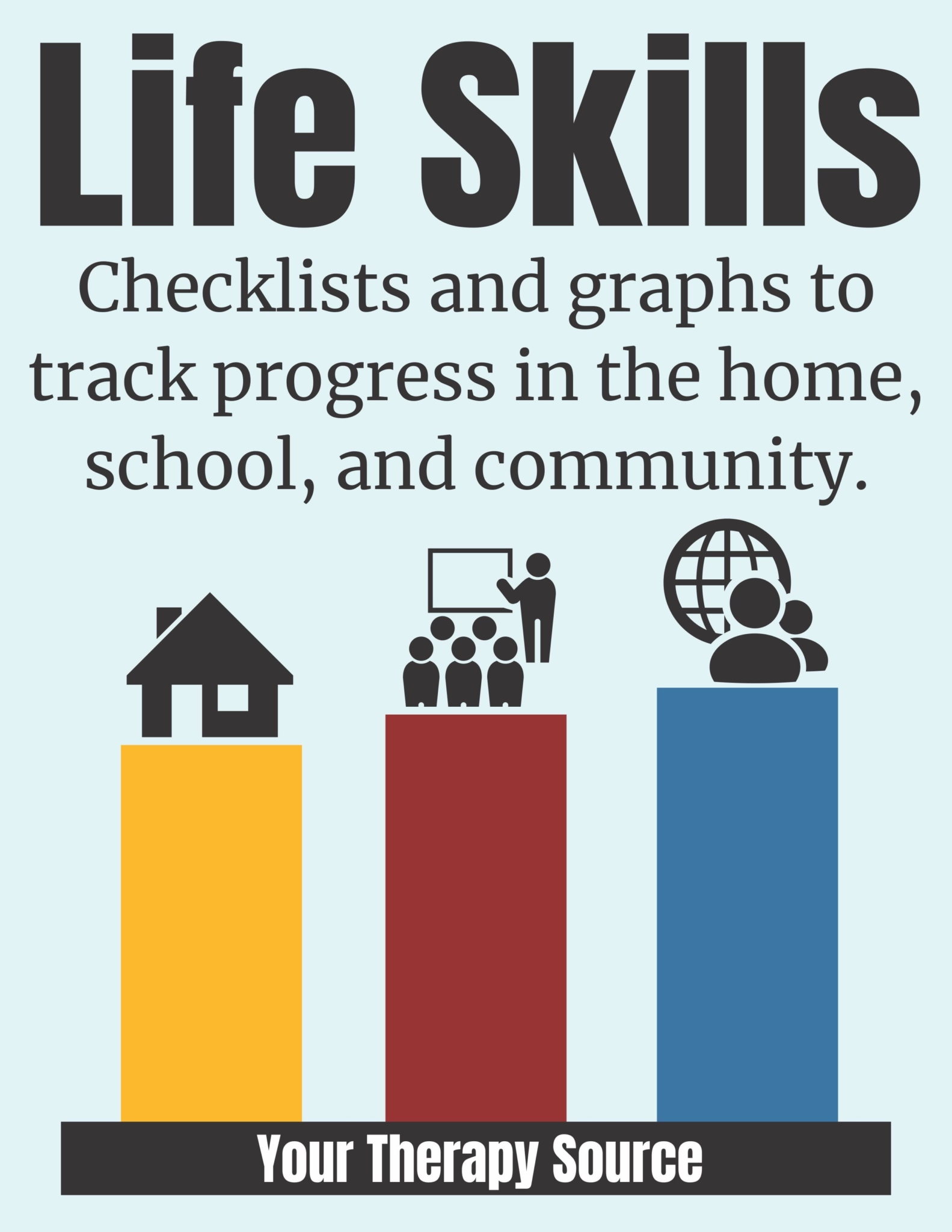
Life Skills Checklists
General Education/Inclusion Examples
Students who have been in general education or inclusion classes throughout their academic career will have IEP transition goals that focus on both academics and employability skills. They are more likely to attend a four-year college, vocational school, or community college.
After high school, Lionel will:
- Attend a trade school to study auto mechanics.
- Work part-time at an auto body shop while attending trade school.
- Gain full-time employment as an auto mechanic within 6 months of completing trade school.
- Maintain employment as an auto mechanic for at least 2 years.
After high school, Kathy will:
- Attend a 4-year university and major in psychology.
- Complete an internship in a hospital mental health unit during the summer between her sophomore and junior year of college.
- Work as a research assistant in the university psychology department for 2 years during her undergraduate career.
- Gain employment in the field of mental health within 6 months of graduation from college.
After high school, Nicole will:
- Attend a 2-year community college and major in business.
- Complete an internship with a local accounting firm during the summer between her freshman and sophomore year of college.
- Work 15 hours or more per week as a bank teller during her undergraduate career.
- Gain employment in the field of business within 6 months of graduation from community college.
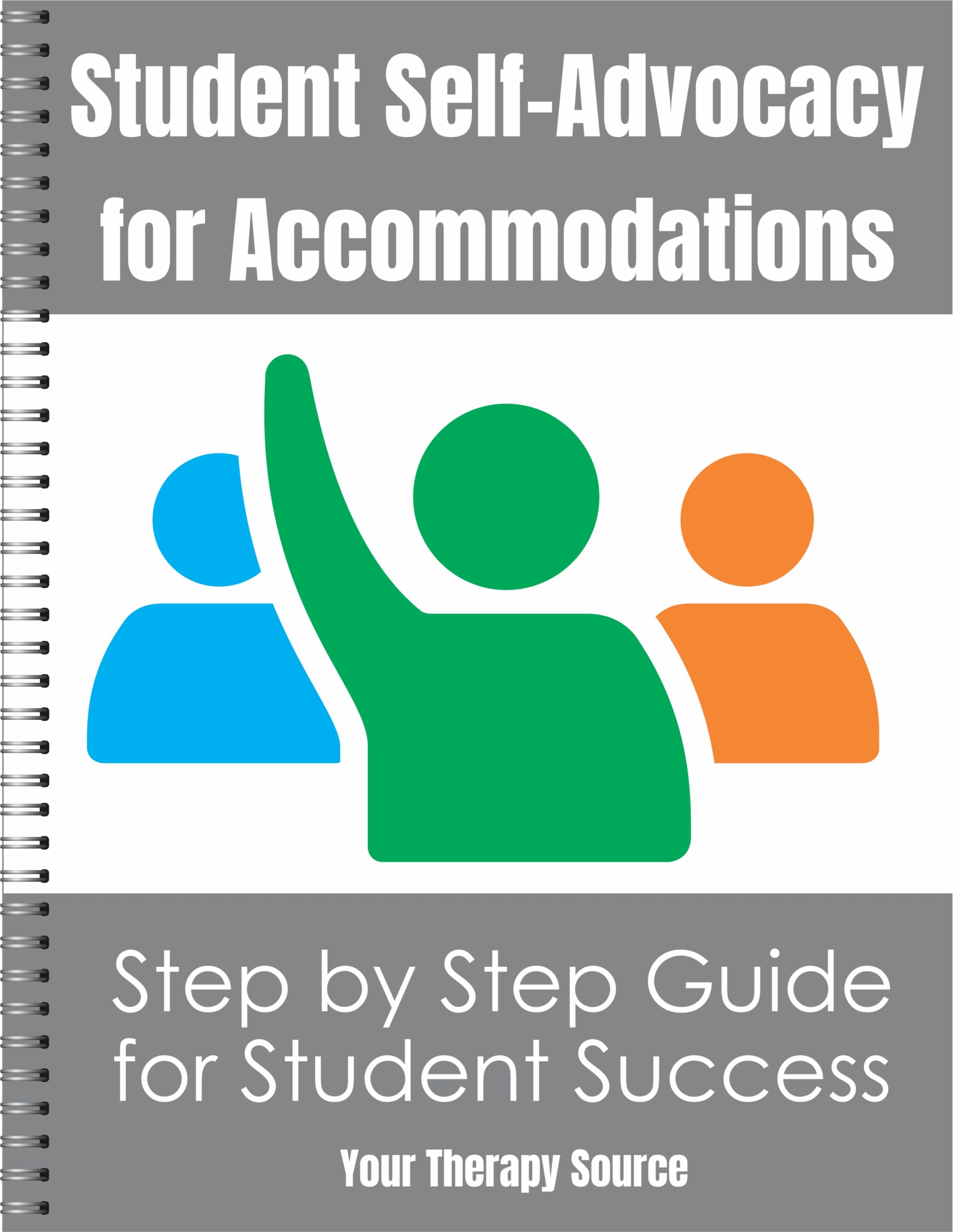
Self-Advocacy for Students
Self-Contained Examples
Students who have spent time in a self-contained classroom setting will have IEP transition goals that focus on some academic skills according to their abilities. They will also have an emphasis on employment, or possibly vocational skills.
After high school, Olivia will:
- Travel independently to and from her center based program on a public bus.
- Use her communication device to request wants and needs at the program.
- Use her communication device to socially interact with peers at the center based adult program.
Students with IEPs have many different goals after high school, depending on their abilities and interests. Life skills students may focus on employment skills, while general education/inclusion students may have a mix of academic and employment goals. Whatever the goals may be, it is important that they are specific, measurable, achievable, relevant, and time-bound. IEP transition goals should be revisited and updated regularly to ensure that they continue to meet the needs of the student.
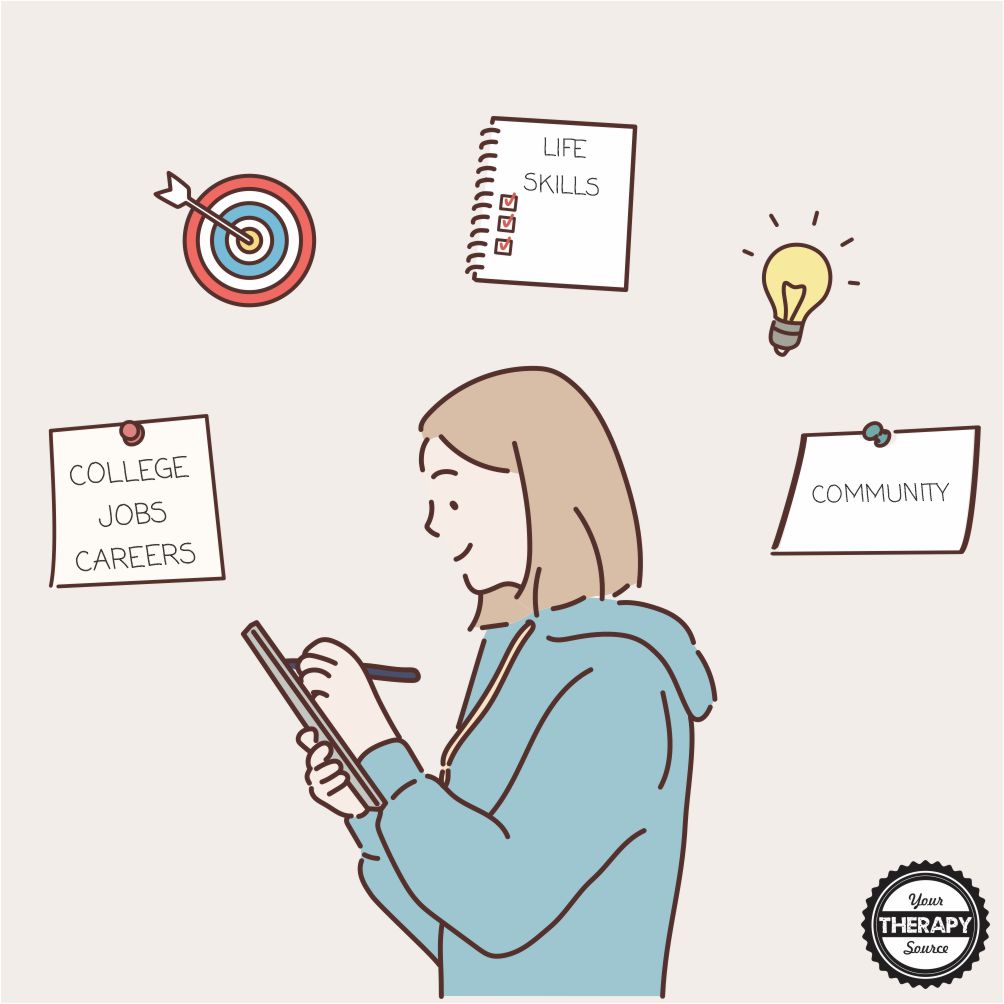
RELATED INFORMATION
SMART Goals Examples for Students


